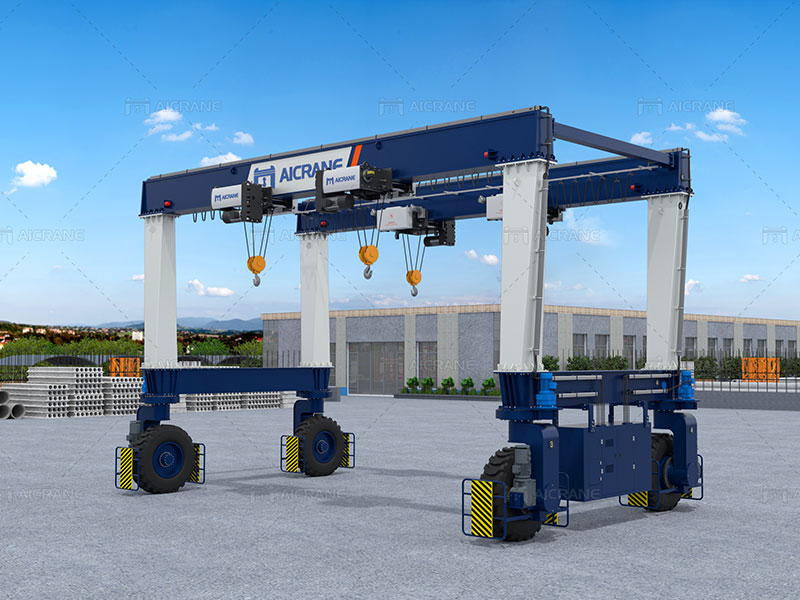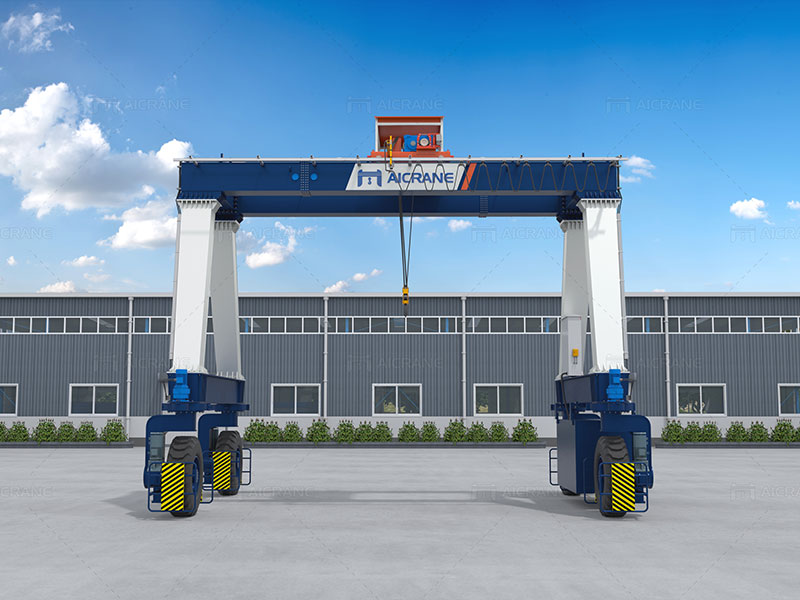Rubber tyred gantry (RTG) cranes are versatile and efficient lifting solutions widely used in ports, warehouses, and industrial sites. Their mobility, powered by rubber tires, allows them to navigate various surfaces, making them suitable for diverse applications. However, one critical question arises for many operators and site managers: Can rubber tyred gantry cranes work in confined spaces? In this article, we will explore the capabilities, considerations, and best practices for utilizing RTG cranes in restricted environments.

Understanding Rubber Tyred Gantry Cranes
Before diving into their use in confined spaces, it’s essential to understand what rtg rubber tyred gantry cranes are and how they operate. RTG cranes are typically designed for lifting heavy loads, such as shipping containers, and are characterized by their ability to move freely on rubber tires. This feature provides a level of flexibility and agility that is not found in traditional rail-mounted cranes.
Key Features of RTG Cranes
- Mobility: The primary advantage of RTG cranes is their ability to move within tight areas. Their rubber tires allow them to traverse uneven ground and maneuver around obstacles.
- Load Capacity: RTG cranes can handle significant weights, often ranging from 20 to 50 tons, making them suitable for heavy-duty lifting tasks.
- Versatile Operation: Equipped with various control options, including remote control and cabin operation, RTG cranes can adapt to different operator preferences and site conditions.
- Space Efficiency: RTG cranes can stack containers vertically, maximizing the use of vertical space, which is crucial in confined areas.
Advantages of Using RTG Cranes in Confined Spaces
1. Enhanced Maneuverability
One of the most significant advantages of RTG cranes is their ability to navigate tight spaces. Unlike rail mounted cranes that require a clear pathway, RTG cranes can pivot and turn in place, making them ideal for congested sites. This maneuverability is essential in environments such as warehouses, where space may be limited, and numerous obstacles may exist.
2. Reduced Ground Pressure
The rubber tires of RTG cranes distribute weight over a larger surface area compared to steel tracks. This feature reduces ground pressure, minimizing the risk of ground deformation and damage, which is particularly important in confined areas where the ground may not be as stable.
3. Versatility in Operations
RTG cranes can handle various tasks in confined spaces, such as loading and unloading containers, moving materials, and assisting in assembly lines. Their adaptability makes them suitable for diverse industries, from logistics to manufacturing.

Challenges of Using RTG Cranes in Confined Spaces
While RTG cranes offer many advantages, working in confined spaces also presents unique challenges that operators must consider.
1. Limited Vertical Clearance
In many confined environments, vertical space can be a limiting factor. RTG cranes, while efficient in moving horizontally, may face restrictions on the height of loads they can lift. It is crucial to assess the vertical clearance in the workspace before operating the overhead gantry crane.
2. Navigating Obstacles
Confined spaces often contain various obstacles, such as machinery, storage racks, or structural columns. Operators must be skilled in maneuvering the crane around these obstacles to prevent collisions and ensure safety. This necessity requires careful planning and awareness of the site layout.
3. Visibility Concerns
In tight spaces, visibility can be a significant issue for operators. Obstacles may obstruct the operator’s view, increasing the risk of accidents. Therefore, implementing additional safety measures, such as spotters or cameras, can help mitigate these risks.
4. Limited Workspace
The restricted area may limit the operational area for the RTG crane, affecting its effectiveness. The operational efficiency may decrease if the crane cannot maneuver freely, which could lead to delays in operations.
Best Practices for Operating RTG Cranes in Confined Spaces
To ensure safe and efficient operation of rubber tyred gantry cranes in confined spaces, consider the following best practices:
1. Conduct a Site Assessment
Before operating an Aicrane RTG crane in a confined space, conduct a thorough site assessment. Identify potential obstacles, measure vertical and horizontal clearances, and evaluate ground conditions. This information will inform your operational planning.
2. Use Qualified Operators
Ensure that only qualified and trained operators handle the RTG crane. Operators should be familiar with the specific challenges of working in confined spaces and know how to maneuver the crane safely around obstacles.
3. Implement Safety Protocols
Establish clear safety protocols for operating in confined spaces. This may include using spotters to guide the crane, implementing emergency stop procedures, and maintaining open communication between the operator and ground personnel.
4. Utilize Technology
Incorporate technology such as cameras or proximity sensors to enhance visibility and awareness of the surroundings. This technology can provide operators with a clearer view of blind spots and help prevent accidents.
5. Plan the Workflow
Efficient planning of the workflow can significantly enhance productivity in confined spaces. Organize the sequence of operations to minimize unnecessary movements and maximize the crane’s effectiveness.
6. Regular Maintenance Checks
Regular maintenance of the RTG crane is essential for safe operation, especially in confined spaces where the crane may experience unique stresses. Ensure that all systems are functioning correctly and that safety features are operational.
Conclusion
Rubber tyred gantry cranes are highly effective tools for operations in confined spaces, providing unmatched mobility and flexibility. Their ability to navigate tight areas, handle heavy loads, and adapt to various tasks makes them invaluable in many industries. However, operators must be aware of the challenges that come with working in limited environments and implement best practices to ensure safe and efficient operations.
By conducting thorough site assessments, utilizing qualified operators, and embracing technology, the potential risks can be mitigated, allowing RTG cranes to thrive in confined spaces. With proper planning and execution, these cranes can significantly enhance productivity, making them a vital asset in modern industrial operations.